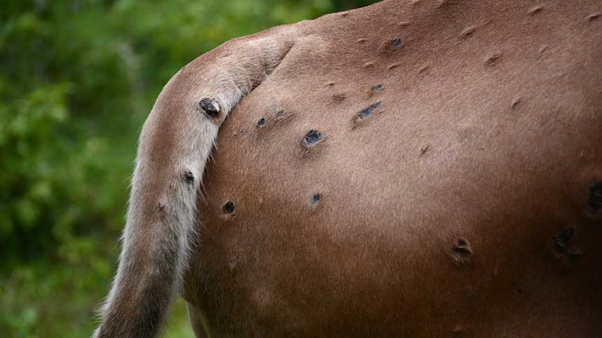

Context
With the lumpy skin disease spreading fast among bovine animals in western and northern Rajasthan, cattle-rearers in the State are suffering heavy losses.
Background
- LSD is endemic to Africa and parts of West Asia, where it was first discovered in 1929.
- In Southeast Asia the first case of LSD was reported in Bangladesh in July 2019.
- In India, which has the world’s highest 303 million heads of cattle, the disease has spread to 15 states within just 16 months.
- In India it was first reported from Mayurbhanj, Odisha in August 2019.
Key Points
- Lumpy skin disease (LSD) is a viral disease of cattle and water buffalo.
- Virus: Poxvirus Lumpy skin disease virus (LSDV).
- The virus is one of three closely related species within the genus capripoxvirus, the other two species being Sheep pox virus and Goat pox virus.

- Symptoms:
- It appears as nodules of two to five centimetre diameter all over the body, particularly around the head, neck, limbs, udder (mammary gland of female cattle) and genitals.
- The lumps gradually open up like large and deep wounds.
- Other clinical signs include general malaise, ocular and nasal discharge, fever, and sudden decrease in milk production.
- Effect: According to the Food and Agriculture Organization (FAO) the mortality rate is less than 10%.
- Vectors: It spreads through mosquitoes, flies and ticks and also through saliva and contaminated water and food.
- Prevention: Control and prevention of lumpy skin disease relies on four tactics - movement control (quarantine), vaccination, slaughter campaigns and management strategies.
- Treatment: There is no treatment for the virus, so prevention by vaccination is the most effective means of control.
- Secondary infections in the skin may be treated with Non-Steroidal Anti-Inflammatories (NSAIDs) and also antibiotics when appropriate.
- Implications: This will have a devastating impact on the country, where most dairy farmers are either landless or marginal landholders and milk is among the cheapest protein sources.
|
Measures to be taken
|



